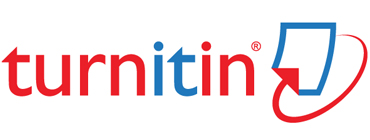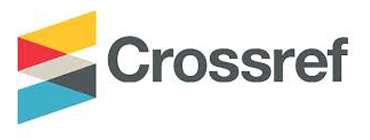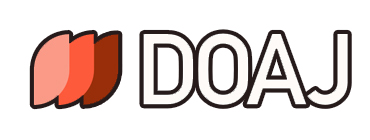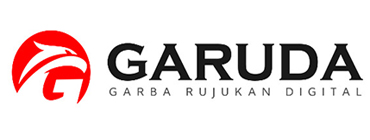INSTRUMEN PENILAIAN TERINTEGRASI : PENGUKURAN KEMAMPUAN BERPIKIR KRITIS DAN KETERAMPILAN SAINS SISWA PADA MATERI LARUTAN ELEKTROLIT DAN NONELEKTROLIT
Abstract
Full Text:
PDFReferences
Adedoyin, O. O., & Mokobi, T. (2013). Using IRT Psychometric Analysis in Examining The Quality of Junior Certificate Mathematic Multiple Choice Examination Test Items. International Journal of Asian Social Science, 3(4), 992-1011.
Amelia, R. N., Sari, A. R., & Astuti, S. R. (2021). Chemistry learning outcomes assessment: How is the quality of the tests made by the teacher? Journal of Educational Chemistry, 3(1), 11-22. doi:http://10.21580/jec.2021.3.1.6582
Astuti, S. R., Suyanta, Widjajanti, E., & Rohaeti, E. (2017). An integrated assessment instrument: Developing and validating instrument for facilitating critical thinking abilities and science process skills on electrolyte and nonelectrolyte solution matter. AIP Conference Proceedings (pp. 050007-1–050007-6). College Park: AIP Publishing.
Austin, A. C., Ben-Daat, H., Zhu, M., Atkinson, R., Barrows, N., & Gould, I. R. (2015). Measuring student performance in general. Chemistry Education Research and Practice, 16(1), 168-178. doi:https://doi.org/10.1039/C4RP00208C
Baker, F. B. (2001). The basic of item response theory. Nwe York: ERIC Clearinghouse on Assessment and Evaluation.
Balistreri, S., Di Giacomo, F., Noisette, I., & Ptak, T. (2012). Global education: Connections, concepts, and careers. New York: College Board.
Bond, T. G., & Fox, C. M. (2015). Applying the rasch model fundamental measurement in the human sciences third edition. New York: Routledge.
Brookhart, S. M. (2010). How to assess higher-order thinking skills in your classroom. Alexandria: ASCD.
Chebii, R., Wachanga, S., & Kiboss, J. (2012). Effects of Science Process Skills Mastery Learning Approach on Students’ Acquisition of Selected Chemistry Practical Skills in School. Creative Education, 3(8), 1291-1296.
Darmaji, D., Kurniawan, D. A., & Irdianti, I. (2019). Physics education students’ science process skills. International Journal of Evaluation and Research in Education, 8(2), 293-298. doi:http://10.11591/ijere.v8i2.28646
Hambleton, R. K., & Swaminathan, H. (1985). Item Response Theory. New York: Kluwer Inc.
Ismail, Z. H., & Jusoh, I. (2001). Relationship between science process skills and logical thinking abilities of malaysian students. Journal of Science and Mathematics Education in S.E Asia, xxiv(2), 67-77.
Judge, B., Jones, P., & McCreery, E. (2009). Critical thinking skills for education students. London: Learning Matters Ltd.
Karabatsos, G. (2003). Comparing the abberant response detection performance of thirty-six person-fit statistics. Applied Measurement in Education, 16(4), 277-298. doi:https://doi.org/10.1207/S15324818AME1604_2
Keil, C., Haney, J., & Zoffel, J. (2009). Improvements in student achievement and science process skills using environmental health science problem-based learning curricula. Electronic Journal of Science Education, 13(1), 1-18.
Kemendikbud. (2013). Permendikbud Nomor 66 tahun 2013 tentang Standar Penilaian Pendidikan. Jakarta: Kemendikbud.
Li, J., & Klahr, D. (2006). The psychology of scientific thinking: Implications for science teaching and learning. In J. Rhoton, & P. Shane, Teaching Science in the 21st Century (p. 2). Arlington: NSTA Press.
Linacre, J. M. (2002). What do infit and outfit mean-square and standardized. Rasch Measurement Transaction, 16(2), 878.
Linacre, J. M. (2004). Test Validity and Rasch Measurement: Construct, Content, etc. asch Measurement Transactions, 18(1), 970-971.
Mahapoonyanont, N., Krahomwong, R., Kochakornjarupong, D., & Rachasong, W. (2010). Critical thinking abilities assessment tools: reliability generalization. Procedia Social and Behavioral Science (pp. 434–438). Amsterdam: Elsevier.
Marasigan, A. C., & Espinosa, A. A. (2014). Modified Useful-Learning Approach: Effects on Students‘ Critical Thinking Skills and Attitude towards Chemistry. International Journal of Learning, Teaching and Educational Research, 1(1), 35-72.
Marzano, R. J. (2007). The art of science teaching. Alexandria: ASDC.
Meijer, R. R. (1996). Person-fit research: an introduction. Applied Measurement in Education, 9(1), 3-8. doi:https://doi.org/10.1207/s15324818ame0901_2
Meijer, R. R., & Sitsma, K. (2001). Person fit statistic: What is their purpose? Rasch Measurement Transactions, 15(2), 823.
Mutisya, S. M., Too, J. K., & Rotich. (2014). Performance in Science Process Skills: The Influence of Subject Specialization. Asian Journal of Social Science & Humanities, 3(1), 179-188.
Rauf, R. A., Rasul, M. S., Mansor, A. N., Othman, Z., & Lyndon, N. (2013). Inculcation of science process skills in a science classroom. Asian Social Science, 9(8), 47-57.
Razak, N. b., Khairani, A. Z., & Thien, L. M. (2012). Examining quality of mathemtics test items using rasch model: Preminarily analysis . Procedia Social Behavioral Science (pp. 2205 – 2214). Amsterdam: Elsevier.
Rumahlatu, D., Sangur, K., & Liline, S. (2020). The effect of complex instruction team product (CITP) learning model on increase student’s skills. International Journal of Instruction, 13(1), 587-606.
Rusmini , Suyono, & Agustini , R. (2021). Analysis of science process skills of chemical education students through self-project based learning (SJBL) in the covid-19 pandemic era. Journal of Technology and Science Education, 11(2), 371-387. doi:https://doi.org/10.3926/jotse.1288
Saribaz, D., & Bayram, H. (2009). Is it possible to improve science process skills and attitudes towards chemistry through the development of metacognitive skills embedded within a motivated chemistry lab?: A self-regulate learning approach. Procedia Social and Behavioral Sciences (pp. 61-72). Amsterdam: Elsevier.
Schulz, H., & Fit zPatrick, B. (2016). Teachers’ understandings of critical and higher order thinking and what this means for their teaching and assessments. Alberta Journal of Educational Research, 62(1), 61-86.
Smith, E. V. (2001). vidence for the reliability of measures and validity of measure interpretation: A Rasch measurement perspective. Journal of Applied Measurement, 2(3), 281-311.
Sumintono, B., & Widhiarso, W. (2015). Aplikasi pemodelan rasch pada asessment pendidikan. Cimahi : Trim Komunikata Publishing House.
Taber , K. S. (2018). The use of cronbach’s alpha when developing and reporting research instruments in science education. Research in Science Education, 48, 1273–1296.
Tavakol, M., & Dennick, R. (2011). Making sense of cronbach’s alpha. International Journal of Medical Education, 2, 53-55. doi:DOI: 10.5116/ijme.4dfb.8dfd
Tosun, C., & Taskesenligil, Y. (2013). The effect of problem-based learning on undergraduate students' learning about solution and their physical properties and scientific processing skills. Chemistry Education Research and Practice, 14(1), 36-50. doi:https://doi.org/10.1039/C2RP20060K
Yasin, R. M., Yunus, F. A., Che Rus, R., Ahmad, A., & Rahim, M. B. (2015). Validity and reliability learning transfer item using rasch measurement model. Procedia Social and Behavioral Science (pp. 212 – 217). Amsterdam: Elsevier.
Zhou, Q., Huang, Q., & Tian, H. (2013). Developing Students’ Critical Thinking Skills by Task-Based Learning in Chemistry Experiment Teaching. Crative Education, 4(12A), 40-45.
Zoller, U. (2001). Alternative assessment as (critical) means of facilitating HOCS-promoting teaching and learning in chemistry education. Chemistry Education Research and Practice in Europe, 2(1), 9-17.
DOI: http://dx.doi.org/10.30829/tar.v29i2.1858
Refbacks
- There are currently no refbacks.

Jurnal Tarbiyah by UIN Sumatera Utara Medan is licensed under a Creative Commons Attribution-NonCommercial-ShareAlike 4.0 International License.
Based on a work at http://jurnaltarbiyah.uinsu.ac.id/index.php/tarbiyah.
Permissions beyond the scope of this license may be available at http://jurnaltarbiyah.uinsu.ac.id/index.php/tarbiyah/about/submissions#copyrightNotice.
















